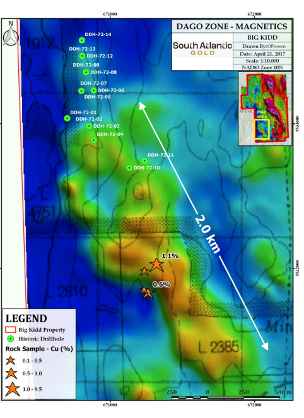Big Kidd Project
British Columbia
Big Kidd Project By The Numbers
2.5 km
4,055
60 km
20 km
20 km
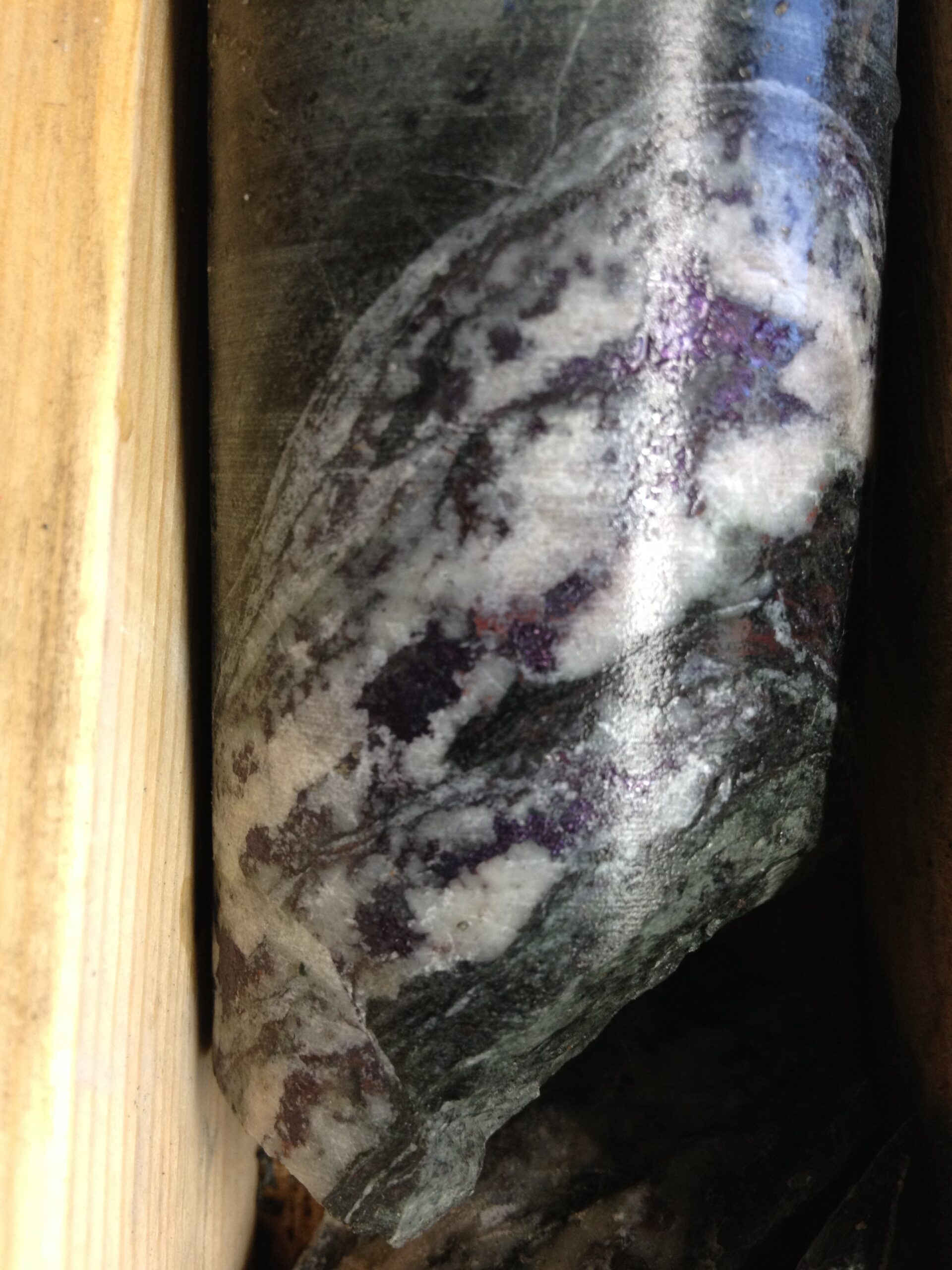
Advanced North American Copper Exploration
BIG KIDD
Big Kidd is a large hydrothermal system with extensive exploration focused on a shallow breccia. Excellent quality datasets exist and show evidence of multiple intrusive/breccia events. The system shows economic copper and gold grades in drilling and surface sampling. Within the data, Quetzal identified compelling evidence for two undrilled alkalic porphyry intrusions.
An analogue for the proposed targets at Big Kidd is the Northparkes mine in New South Wales, Australia. Geologically, Northparke setting is in a folded sequence of submarine volcanics and volcaniclastics. Multiple quartz monzonite porphyry pipes intrude into the volcanics and bring mineralization. Northparkes hosts economic copper and gold deposit.
Background
The Big Kidd project covers 4,055 hectares in Southern British Columbia, approximately 20 km southeast of Merritt, BC. It’s easily accessed by Highway 97C and a network of roads on the property.
The project is in the productive volcanic facies of the Nicola Group of rocks. This terrane hosts many alkalic porphyry copper/gold deposits including Copper Mountain mine and the historic Craigmont mine.
Exploration of the area dates to the late 1890’s. In 1916, miners extracted approximately 10 tons of ore with 1,000 pounds of copper from the Golden Sovereign mine. And in 1918, the mine at Big Sioux produced 44 tons of ore with 12% copper, 68 g/t silver, and 0.57 g/t gold.
The property saw periodic exploration since the 1950’s, including work by Kennecott and Placer Dome. The most recent exploration work was a drill pgram completed by Jiulian Resources (now South Atlantic Gold) in 2019.
Historic work focused on the large Big Kidd (BK) Breccia body. It is well drilled and contains a small zone of economic copper mineralization. It contains a non-compliant historic resource from 2004 of 122.4 million tonnes at 0.33 g/t gold and 0.15% copper. Additional drilling in the interim expanded the mineralization footprint beyond that 2004 estimate.
However, drilling returned significant intersections including:
- DDH92-01: 71 m of 0.75g/t gold and 0.20% copper from 173 m to 244 m
- BK 97-04: 18 m of 1.97 g/t gold and 0.28% copper from 227.3 m to 245.3 m
- BK 97-05: 116 m of 0.80 g/t gold and 0.12% copper from 143 m to 259 m – including 19.5 m of 3.1 g/t gold and 0.18% copper
Recent work chased a copper in soil anomaly connects BK Breccia to Big Sioux in the north. In 2019, South Atlantic Gold drilled 4,192 m at BK Breccia laterally and at depth. Drill holes extended up to 547 m below surface.
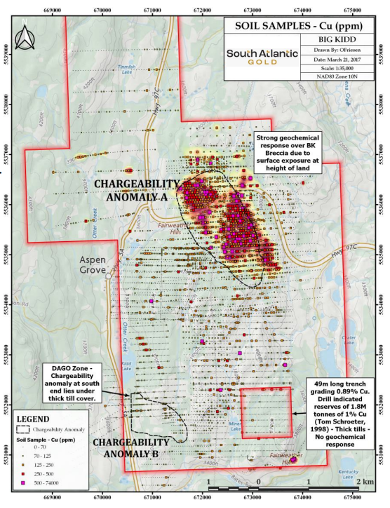
Big Kidd Targets
In 2018, an IP survey over the BK Breccia indicated a strong chargeability anomaly down dip of the historic surface zone, called the Big Brother zone.
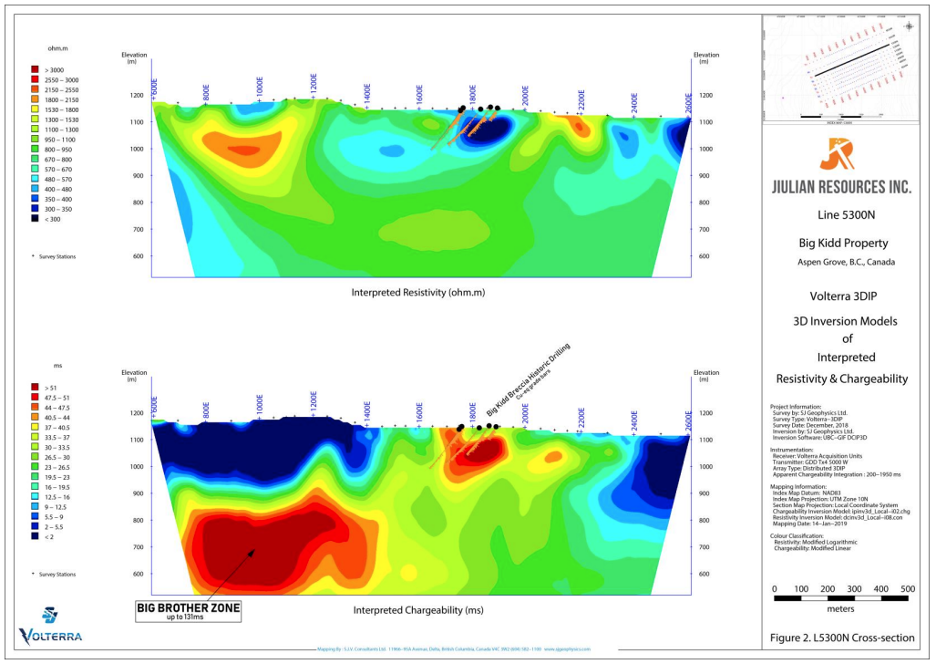
A drill hole into Big Brother in 2019 failed to find porphyry. However, the drill hole contained strong amounts of pyrite throughout.
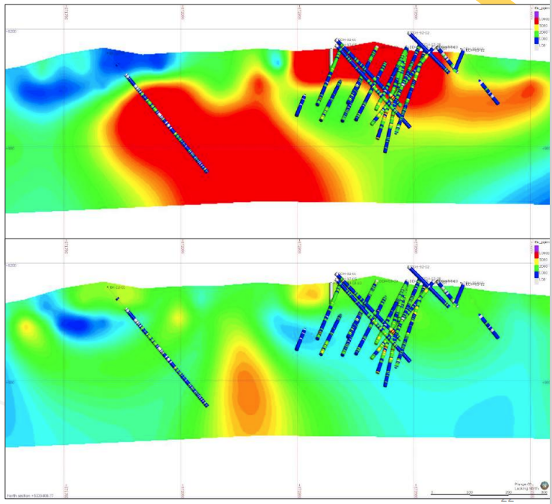
TARGET 1
The geophysical data suggests that the target could be a narrow, 100 m by 400 m (observed on two survey lines) altered intrusion.
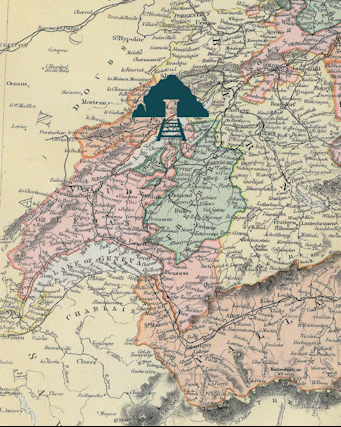

Letters in the drill holes above refer to the photos below
The BK-12-01 drill hole into the chargeability anomaly appeared to fall short of the target. Core logs indicate that the hole failed to intersect a porphyry. However, the core mineralogy shows evidence that it’s approaching a porphyry system.
The pyrite and chalcopyrite mineralization associated with strong magnetite disseminations in volcanic rocks created the chargeability anomaly. As the hole continued, epidote veinlets become abundant and then scarce. Actinolite veins occur. The chalcopyrite to pyrite ratio increases from approximately 1:3 to 3:1 at the bottom of the hole.
At the base of the hole, two 1cm quartz veins with coarse chalcopyrite occur (photo D).
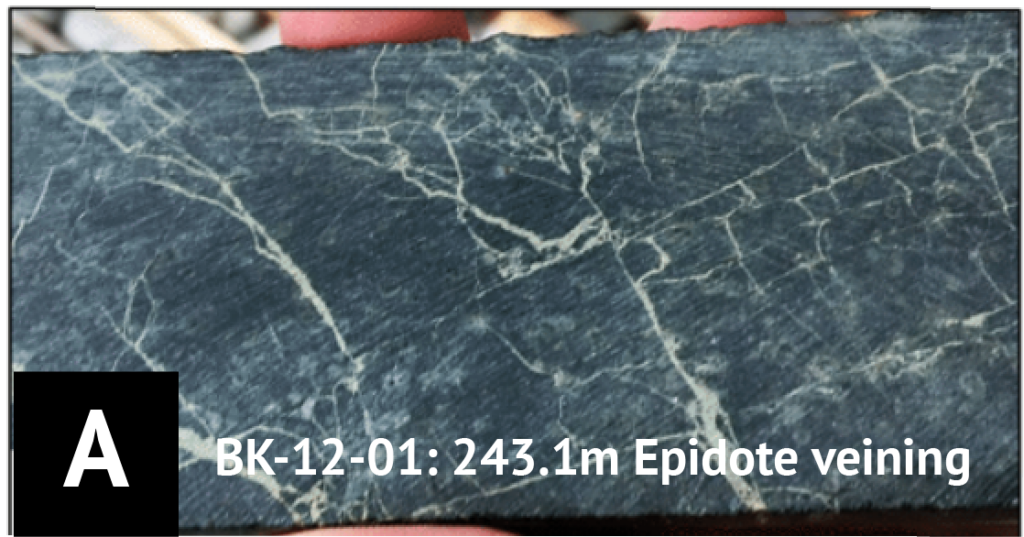


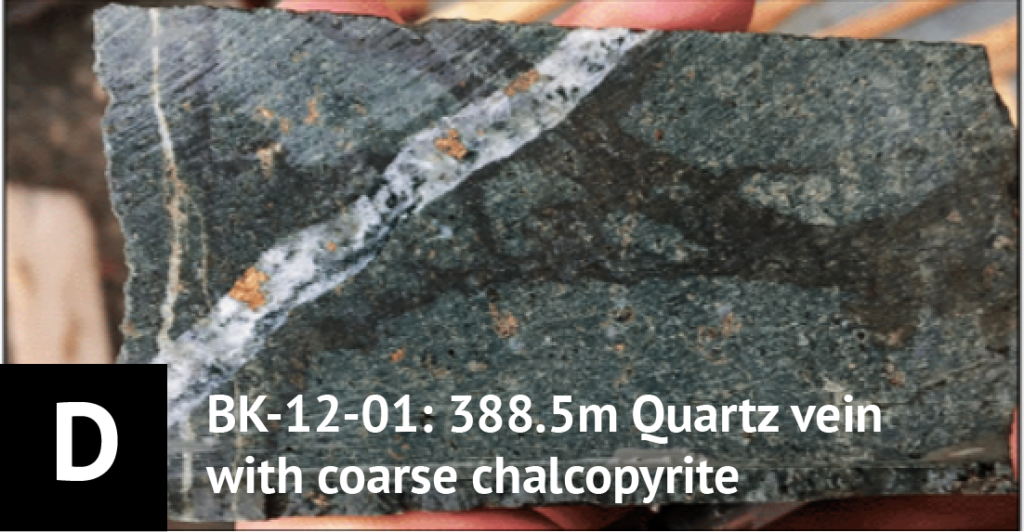
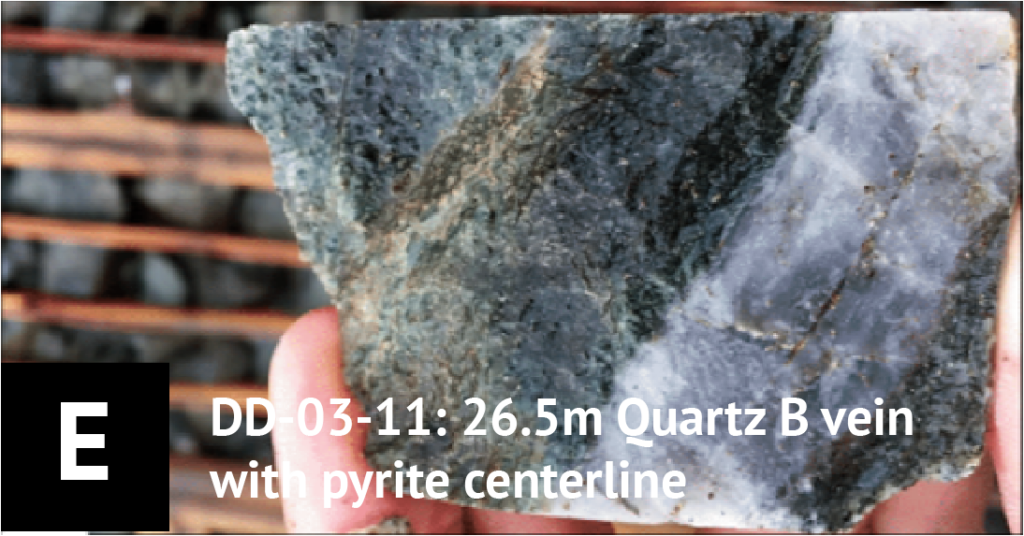

TARGET 2
A similar, but undrilled target exists to the west. It has coincident soil geochemistry and geophysical anomalies: magnetic high, moderate chargeability and resistivity high.
The Quetzal team sees it as a Northparkes (New South Wales, Australia) alkalic porphyry style target.
The target is in a 200 m by 350 m plug of upper Triassic to Jurassic granite, quartz-monzonite.
A copper, bismuth, and molybdenum in soil anomaly exists coincident with the intrusive body. And it shows a distinctive, low-resistivity anomaly in geophysical surveys
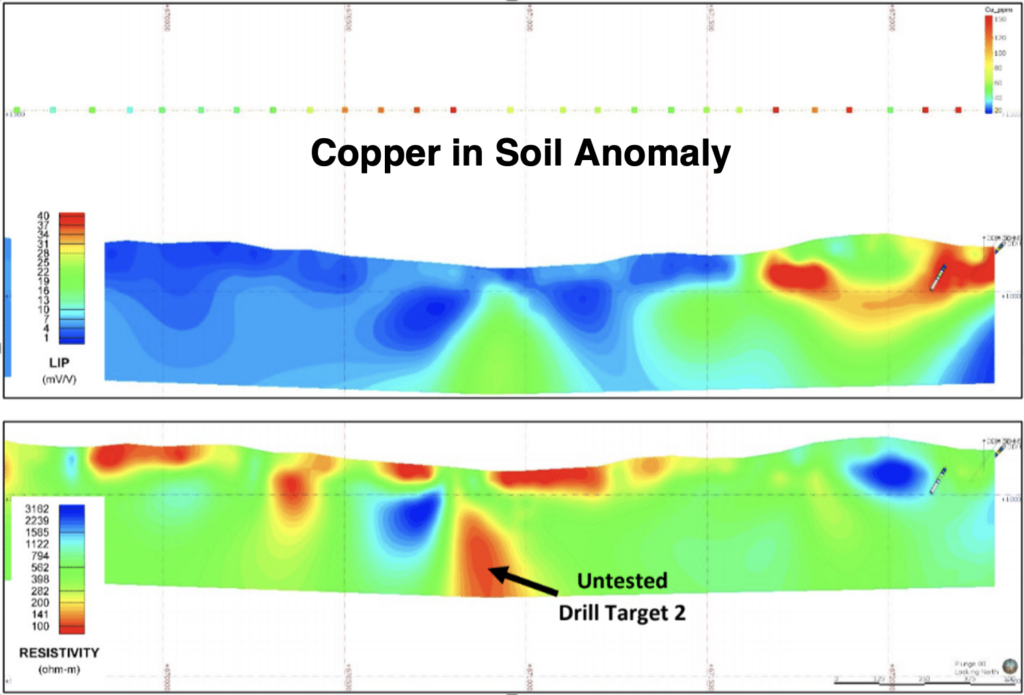


TARGET 3
This area contains a 427 m by 152 m elevated copper in soil anomaly of 280 ppm against a background of 70 ppm. The soil anomaly is coincident with a 1,000 m x 300 m magnetic and chargeability anomaly under thick till.
It was drilled in 1972, targeting a northwest trending anomaly. These are selected intervals with average grades.
- Hole 72-2: 3 m at 0.58% copper from 16.8 m to 19.8 m
- Hole 72-2: 2.2 m at 3.97% copper and 2.2 g/t gold from 96 m to 98.2 m
- Hole 72-5: 14.3 m at 0.86% copper from 16.8 m to 31.2 m;
- including 7.6 m at 1.15% copper from 16.8 m to 24.4 m
- Hole 72-7: 29 m at 1.4% copper from 30.5 m to 59.5 m
- Hole 72-7: 7.6 m at 0.78% Cu from 62.5 m to 70.0 m
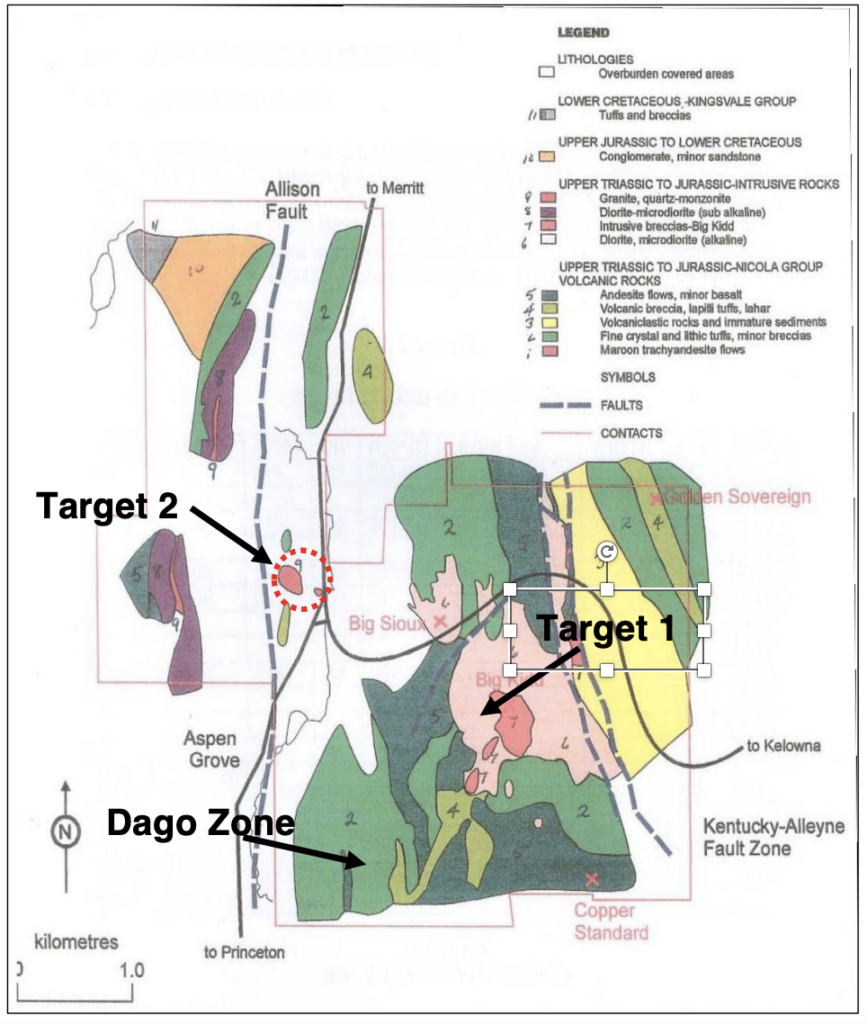
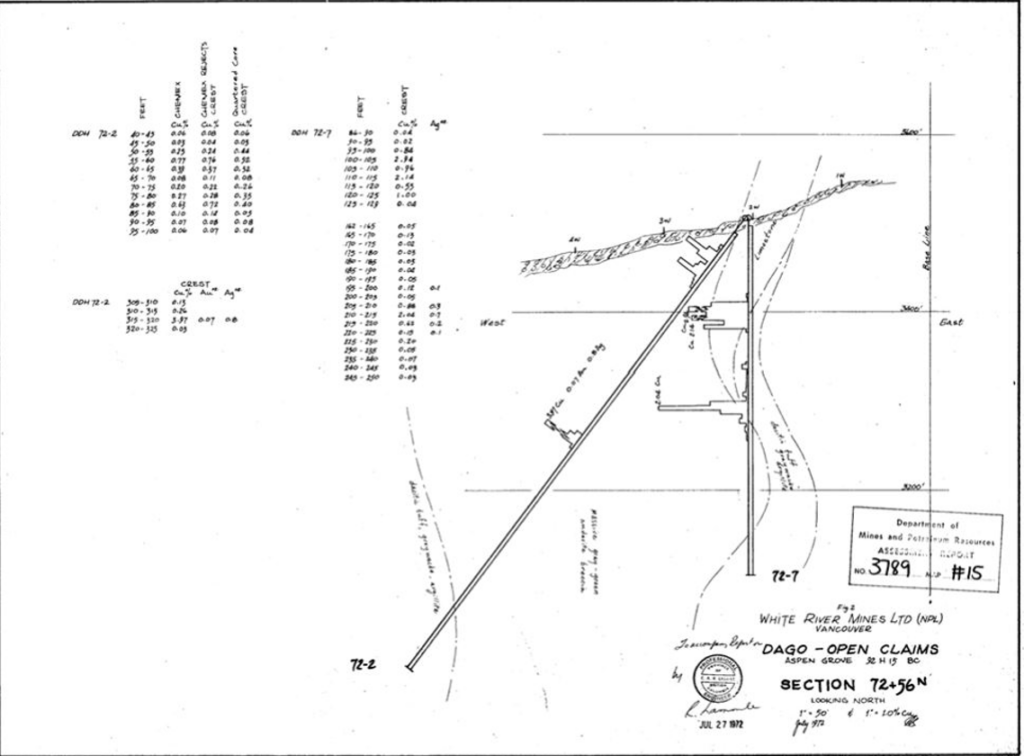
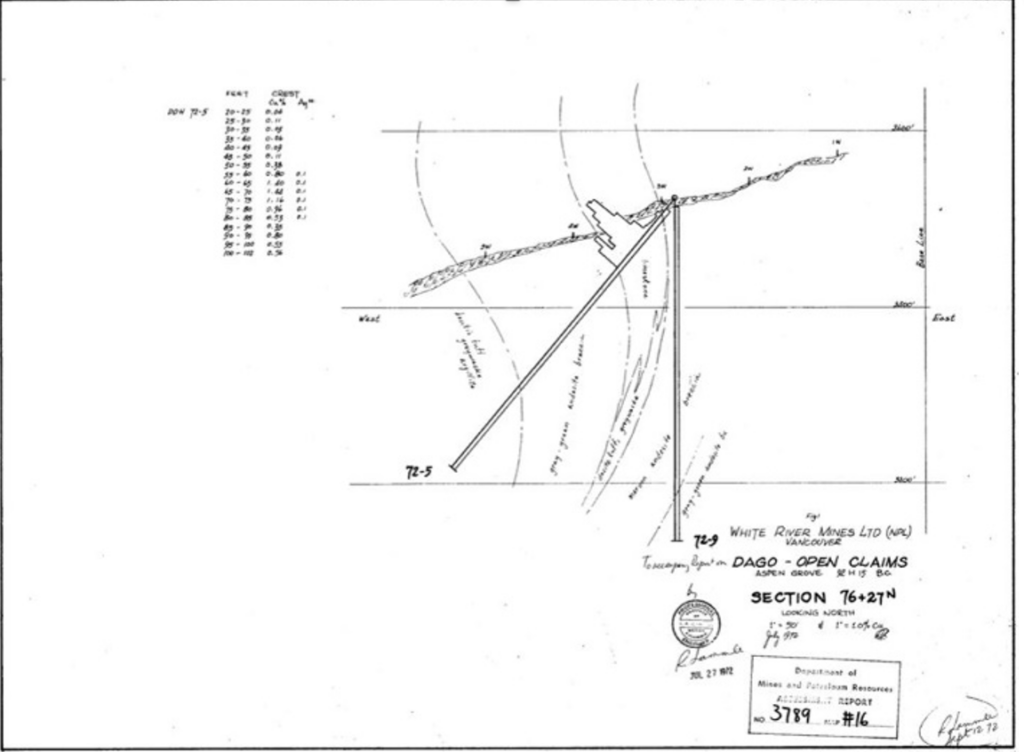
.The Nicola Group is an attractive region of Upper Triassic volcanic, sedimentary, and intrusive rocks. They are an accreted island arc assemblage that trends north-south.
A series of Upper Triassic to Upper Cretaceous batholiths and plutons intrude the Nicola Group. The alkalic intrusions at Copper Mountain and Iron Mask host significant copper and gold porphyry deposits. The Big Kidd property lies within a similar alkaline intrusive suite.
Wells (1999) and Folk (2011) interpreted the Big Kidd Breccia:
The breccia pipe is believed to represent a sub-vertical volcanic neck dominated by fragments of Nicola Group volcanics and microdiorite to microsyenodiorite, and monzonite to syenomonzonite intrusives
The property straddles a triple fault junction of the Kentucky-Alleyne, Allison and Quilchena faults. Interpreted west to southwest-trending faults lie between the Big Kidd and Big Sioux targets. These are areas of critical interest due to potential for increased fluid flow and resulting mineralization.
Mineralization on Big Kidd includes pyrite, magnetite, chalcopyrite, bornite, and gold. The Big Kidd Breccia hosts strong pyrite-chalcopyrite mineralization. Elsewhere on the property, mineralization occurs in structures in the Nicola volcanics.
The property has the potential to host a number of narrow, alkalic porphyry intrusions to form a deposit similar to Northparkes in Australia. Big Kidd hosts a large zone of strong alteration, evidence of economic mineralization (Big Kidd breccia), evidence of a late-stage porphyry (trachytic porphyry dikes), bornite in discontinuous fractures, and geochemical/geophysical targets.
